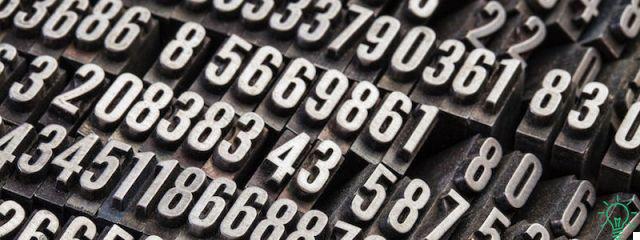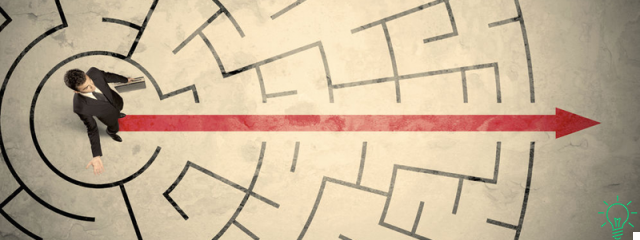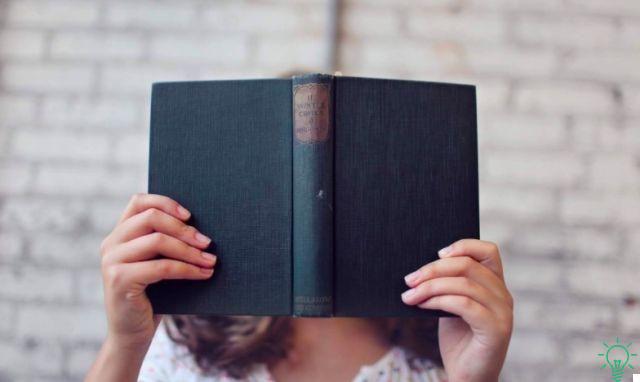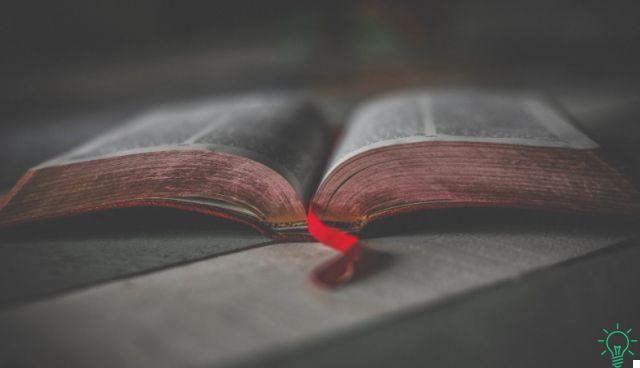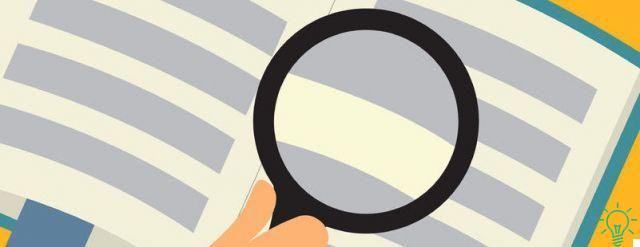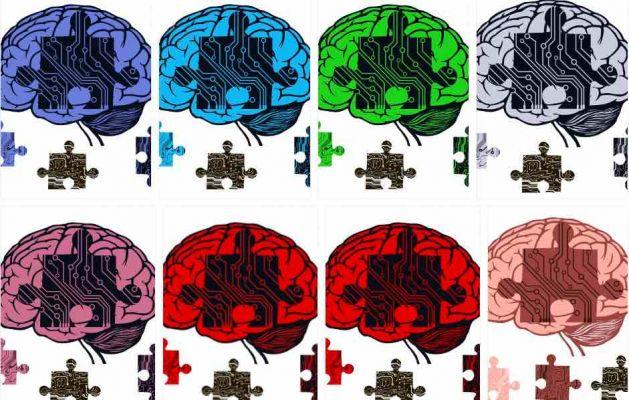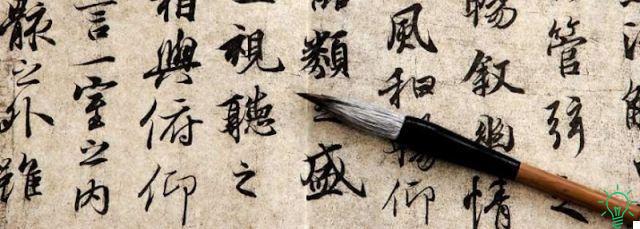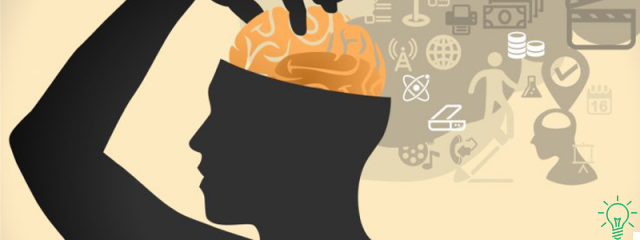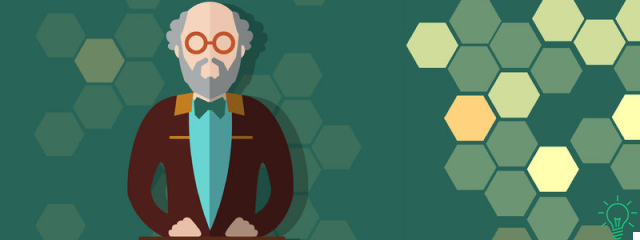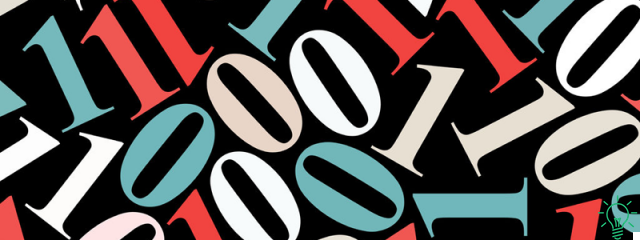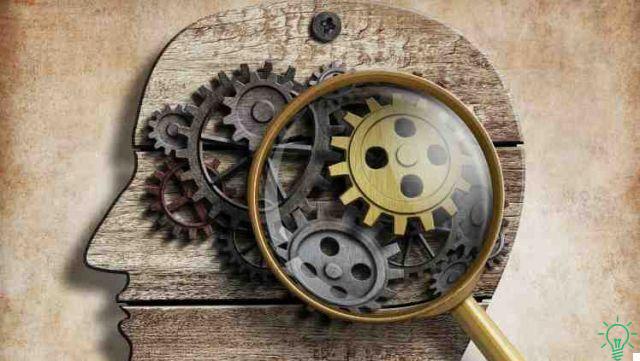
This long exercise in quick memorization comes from the reworking of a manual that I published 3 years ago on Amazon, and which has recently expired the exclusivity with Amazon itself.
We will do it with the technique of the loci, and using a didactic methodology that the Americans call "over the shoulder".
That is, as if I were behind your back, doing the exercise with you step by step.
For this reason the whole article is over 10 words, but trust me it is time well spent.
In fact, many readers write to me to better understand how to apply the loci technique to difficult lists and names.
But to do this it is not enough to know generically how the technique works, or how a palace of memory is built. Instead, we need a detailed explanation, and a lot of practice.
In this exercise, therefore:
- I will clarify all the fundamental aspects of how a Loci path is built
- We will look at some typical image building problems
- We will use "segmentation" to compress the info
- You will find that the paths of loci you already know are practically endless
- We will solve one after another the practical problems you encounter when storing data with the loci technique
Finally, after the exercise, we will see two examples of practical application to the actual study:
- One related to pure data storage (drug list)
- The other is related to the memorization of concepts.
You will be able to follow the article even if you don't know anything about memory techniques: in fact I have put, when necessary, the indispensable references for further study.
I believe that there is no site that presents such a complete and detailed memorization exercise with loci.
For this, I am very satisfied, and I hope that you will finally remove all the curiosities you have about this technique.
If not, write me!
Memorization exercise: introduction
For the exercise we will do together, I have chosen something really boring and complicated: memorizing the 46 titles of the Old Testament.
These are "difficult" names (and students often find themselves having to memorize difficult names), but at the end of the exercise you will be able to repeat them all in one direction and the other, and to remember at will which book is in the X, or Y, or Z position.
In order to memorize these "difficult" names it is essential to associate another technique with the loci technique, the keyword method: born in the 50s, it is also called "the spy technique", because it was said to be used by secret agents during the cold war to quickly learn foreign words.
If you want to deepen it, go to the article on the keyword method that you find on the blog, or download the free manual I have prepared (They will not be necessary to do the exercise today, because I will guide you).
In a nutshell, it is a question of replacing difficult or unfamiliar words with one or more sounds of words that you know well (obviously, transforming them into images, as with all memory techniques).
Often, in fact, to remember a word we just need a clue (how many times, of a word, did you say "I have it on the tip of my tongue", and then a little clue was enough to remember it?), And the keyword method it teaches precisely how to construct these clues.
However do not worry: since we will do the exercise in "over the shoulder" mode, it will be very easy to understand and apply the method.
One last observation before starting: if you don't know memory techniques, you will find yourself doing things in this exercise that will seem strange, maybe even stupid.
But don't be discouraged, and follow me to the end.
Memorize by stepping out of your comfort zone
You see, every time we learn to do something new we have to get out of our comfort zone, the one that gives us security, because "this is how we have always done it, why do we do different?"
And getting out of the comfort zone is not easy, precisely because it is comfortable and safe: we know what we do, what we will get, and how we will get it.
The resistance to leaving the comfort zone is a partly very useful psychological mechanism, because for two million years it has protected us from risks: “I'm in the territory I know, because even if it's not the best, at least I know it”.
On the other hand, however, it is also the biggest obstacle we encounter when it comes to change and improve.
The right way to manage it, in my opinion, is in small steps: that is to leave the territory you know calmly, a little at a time; without burning everything you did until the day before, but also without refusing to explore something new a bit.
And the same goes for memory techniques:
Branding them immediately as useless because at the beginning you don't feel comfortable using them, means being too attached to your comfort zone and denying the evidence: remember that not only have they been used with profit by great geniuses of history, but they have scientifically proven effective for learning in thousands of tests on normal people. You too can then use them to memorize X times faster.
On the other hand, abandoning your study method suddenly and completely to replace it all with memory techniques, when in fact you have not gained the experience to manage them well in all situations, is a very risky thing. You will find yourself using them badly and with great difficulty.
So, while doing the exercise with me, don't think “what a str… .ata”, or on the contrary “exceptional, now I'll just study more like this”.
Instead, simply start wondering when, how, and to what extent you can start introducing memory techniques here and there into your study method.
First for the more obvious little things (lists, names, foreign words, etc), and then for the more complex ones, such as concepts and reasoning.
However, the examples I put at the end of the book will help you a lot.
Memorization exercise: analysis
"Memorize the titles and positions of the 46 books of the Old Testament"
As I told you, I will do the exercise with you. Like you, I do not know the titles of the 46 books of the Old Testament, much less their order, so we will learn them together step by step.
First we must have the list of titles: there are different divisions of the books of the Old Testament, and I have chosen to remember them according to the order given by the site utopia.it, which I present below.
Let's read it quickly together and then I'll make my considerations.
Genesis, Exodus, Leviticus, Numbers, Deuteronomy
Joshua, Judges, Ruth, Samuel1, Samuel2
Kings1, Kings2, Chronicles1, Chronicles2, Ezra
Nehemiah, Tobias, Judith, Esther, Maccabees 1
Maccabees2, Job, Psalms, Proverbs, Qoelet
Song of Songs, Wisdom, Sirach, Isaiah, Jeremiah
Lamentations, Baruch, Ezekiel, Daniel, Hosea
Joel, Amos, Obadiah, Jonah, Micah
Naum, Abacuc, Sofonia, Aggeo, Zaccaria, Malachia
At a first reading we note that: there are several uncommon proper names (eg Hosea, Malachi, Zephaniah, Baruch, Habakkuk ect); some titles, on the other hand, are strange or archaic words, and do not immediately refer to any known word (eg Deuteronomy, Leviticus, Sirach); other titles are repeated and can cause confusion or memory leaps (eg Chronicles 1 and Chronicles 2, Kings 1 and Kings 2).
It is therefore a short list (46 books), but not simple. In fact, I chose this memorization because it presents a series of difficulties and varieties that require a certain experience to be managed, and it is precisely in the management of these problems that one becomes a good mnemonist.
Our warehouse in Loci
The first problem, since I want to memorize not only the order but also the position of the books, is to quickly find an orderly warehouse of loci where to place each book.
For a Loci warehouse to be efficient, it must be something that is engraved in your long-term memory (Remember? We said that storage occurs through association between short-term memory and long-term memory).
The first thing that comes to mind are the 10 fingers of my hands. In fact they can be a good choice: I will place on each finger a chain of 5 images, each representing a book.
To find the exact position of a book, all I need to do is apply the 5 times table, the simplest there is, and then scroll the chain of images on the corresponding finger.
So for example if I want to know what the eighth book is, I'll go to the second finger (books 6 to 10) and scroll through the chain of images until I get to position 3. That's the eighth book.
The technique will work quickly because the chain on each finger is quite short. In fact, the longer a chain, the more links I will have to scroll to reach the one that interests me, and therefore the slower the memory of the position will be. Conversely, the shorter a chain, the easier it is to find the exact position of each of its elements.
In general, therefore, when I want to remember exactly and quickly the position of a datum, I do it in such a way as to never have chains longer than 7 images (which already said between us is a bit too much).
In this case, a chain of 5 words for each of the 10 fingers is not only suitable for the amount of data to be stored (46), but also recalls the number of fingers for each hand.
An experienced mnemonist is always looking for this kind of matches, because they help to remember better and longer: the hand has 5 fingers, and there are 5 pieces of information for each finger. Not 6, nor 4. I think you will remember that easily.
Now, place your hands in front of you making the tips of the two thumbs touch, and look at the back. Since I am right I will begin to remember starting from the right end, that is, from the right little finger, to which I will then attach the first 5 books with a nice associative story. Do it too, no matter if you are left handed.
But first let's evaluate any weak points of the chosen system: I would say that the only real problem that can be highlighted using the fingers of the hands is that you could confuse the right with the left.
So we will have to pay particular attention to distinguish the right fingers from the left ones.
In summary, then:
- We quickly found a Loci “warehouse” suited to the size of the storage
- We have found an ideal number of data to put on each box.
- We have focused on a possible problem with this warehouse (right / left confusion), and we will have to take this into account as we memorize.
You will have to do the three steps just described in each memorization that requires remembering not only the data, but also the position in which it is located. Therefore, focus them precisely: selection of the warehouse, choice of the number of data per box, analysis of warehouse problems.
Let's start now with the first finger, the right little finger, and the 5 books that we will link to it:
Memorization exercise: part I
Genesis, Exodus, Leviticus, Numbers, Deuteronomy
This information must first be transformed into images. Theoretically we could start by visualizing an image of Genesis (God creating man, etc), but it is not the right strategy for two reasons:
- It is a complicated image
- There are data (eg Deuteronomy, but also many others) for which it is difficult if not impossible to find a precise image
We will then use, to form the images, the Keyword method, that is the memory technique used for foreign languages and for strange words in general.
The words that come to my mind, and which I will therefore use as an associative basis, are:
Genesis: Genius
Exodus: Boiled Egg
Leviticus: Yeast
Numbers: Numbers
Deuteronomy: God, earth, name
Looking at the little finger it immediately comes to mind that it is a very weak finger, the weakest of the hand. To compensate for this weakness and defend himself from other fingers, he must therefore be very intelligent.
A real genius. So here is the first GENio image, which gives me the cue to remember the first word, GENESIS. Repeat the logical association between the fact that the little finger is physically weak and therefore must be very intelligent to defend itself: a real GENIUS.
To the image of the GENIUS, I associate that of the SODO egg. The Genie spawns a HARD egg in his hand. Here is the second image, and it will make you remember the word EXODUS. The problem here may be that you are simply imagining an egg, not a HARD egg.
So concentrate on the fact that the egg that the Genie holds in his hand is hard, and as such you have to imagine it. If you imagine a normal egg, you will not remember EXODUS. As for the fact that the HARD egg appears in the hand of the Genie, you should easily remember: the Genes always make something appear.
Now observe the fact that on the hard-boiled egg there is a white powder, the YEAST. Focus well where on the egg it is, how much there is, what color it has. It links the image of the hard-boiled egg to that of the yeast forever, perhaps by observing how the hard-boiled egg rises due to the yeast powder on it. Now focus on the yeast: in some places it is placed in such a way that it seems to draw NUMBERS on the surface of the egg.
Look carefully at the NUMBERS and focus now on their image. Standing above one of the numbers (you choose which one, I chose the 1) there is the statue of a Roman god, a DEUs in fact. Segment the image of the DEUs in two places: the head, which is covered with TERra, and therefore you cannot recognize the face of the Deus. And the base, on which the NOMe is written that allows you to recognize what DEUS is about.
So, you will have connected the following 5 words to the picture of the little finger
Genius -> Boiled Egg -> Yeast -> Numbers -> Deus (-> Earth, -> Name)
The brackets show that the last image, instead of binding directly to a subsequent one, has two other images inside it that help build the word that interests us.
As you have noticed, the words I have chosen (except Numbers) are limited to recalling the titles of the books from afar; don't worry though, that's more than enough. How many times have you said of a word "I have it on the tip of my tongue but I can't remember it"? In all these cases, even just the initial or a small clue of the word is enough to make you remember it in its entirety.
So it is with memory techniques. While for a word like Deuteronomy it may therefore be worth breaking it down to remember it almost exactly, for others it is much more convenient and easier to just remember a "clue".
Now let's move on to the second finger, the ring finger of the right hand. It occurs to me that many wear the engagement ring on this finger, and so this is what we will tie the following 5 titles to:
Memorization exercise: part II
GIOSUE ', JUDGES, RUT, SAMUEL 1, SAMUEL 2
I match them like this:
Joshua: Giosuè Carducci
Judges: Judges
Rut: Rutto
Samuele1: Samuele Bersani (the singer)
Samuele2: Samuele Bersani's twin (he doesn't have it, but it doesn't matter)
So let's start with the engagement ring. Look at it, and especially notice the diamond. This will allow you later not to get confused with the wedding ring that we will display on the ring finger of the left hand. (Remember? We had established that a problem with the fingers could be confusion between left and right, and we had promised ourselves to take this into account when memorizing).
The association between the engagement ring and the book of GIOSUE 'is a typical example of how a mnemonic association is sometimes quite elaborate, and it is on this type of association that at first we are discouraged. But the fact that an association is elaborate shouldn't scare you: if you focus it well you will never forget it.
So, let's imagine that when your boyfriend / girlfriend gave you the engagement ring that you wear on the ring finger of your right hand (it doesn't matter if he really gave it to you, and if you wear it), he also recited a poem to you. . It was a very romantic moment.
But let's try to talk about it a little in detail: many object, in an association of this type, that it is too elaborate, and that therefore we might as well try to remember the name Joshua directly. If you want to progress in memory techniques, you must understand that this is not the case at all: it is no longer easy to remember Joshua directly, because after a while you will forget him easily.
In fact, you will find yourself having to remember it from nothing, without any passage and mnemonic or logical hold. So after a while you will have forgotten that it is the sixth book of the Bible.
Instead, let's see what happens with the memory method even many days after you have made the memorization. First you will start from the fact that you have to join the two hands at the level of the tips of the thumbs; then it will occur to you that each finger corresponds to 5 words. Then you will look at your hands and remember that you have to start from the right end. At that point you will go to the second finger from the right, hands turned with the back towards you, and you will see that it is the ring finger.
When you close your other fingers and look at your ring finger, the question of the engagement ring will come to mind. And right after it was given to you along with a poem. The poet who wrote it is famous, and you will already remember the name, Giosuè Carducci.
With traditional memory then you find yourself having to remember things practically from nothing: it is as if your mind, every time it has to remember something, had to take a big leap all in one fell swoop.
With the memory technique, however, your mind can reconstruct the object to remember through a series of microscopic steps, which lead one after the other to the object in question.
The even more interesting thing, and that you will experience often, is that in reality this series of microscopic steps is only necessary at the beginning, or perhaps after a long time that you do not repeat a memorization.
Normally, in fact, the transition from the vision of your right ring finger to the word GIOSUE 'will be almost instantaneous.
Now let's move on.
So you have the image of Giosuè Carducci, an elderly man with a beard. Next to him there are 12 other bearded elders, with togas: they are the JUDGES. It is essential to visualize togas and beards well in order to trace the word JUDGES.
Instead of issuing a sentence, they rout all together (note the judges burping: it is a strange and paradoxical image, which you should remember well).
At this point you will have to connect the image of a Samuel or Samuele you know well to the image of the Belch. I'll give you some ideas: Samuele Bersani, if you like music; Samuel Beckett, if you are passionate about the theater; Samuel L. Jackson, if you like cinema; Samuel E'to if you know football. You choose. The best then is if you have a friend named Samuele: you will remember him better than all the others. Since there are two books, Samuel 1 and Samuel 2, whatever you imagine, imagine him with a twin.
So I will imagine that the RUTto straightens the hair of the curly singer Samuele Bersani, next to whom I see, to my surprise, an identical twin.
The next finger is the middle one.
Memorization exercise: part III
Kings 1, Kings 2, Chronicles 1, Chronicles 2, Ezra.
The raised middle finger is a universally known vulgar gesture. Imagine doing it, and not to an ordinary person, but to a King. It's not every day that you raise your middle finger to a King, so take advantage of it, and remember this special moment forever.
Choose the King you prefer, and then give him a twin. I imagine the Sun King, Louis XIV of France, who by the way seems to have really a twin, as seen in the film the three musketeers with Leonardo di Caprio.
So, in summary, I look at my raised middle finger and imagine I direct it to nothing less than the Sun King and his twin; both have the face of Leo di Caprio.
Now we must link the image of the King to those of Chronicles. Since we're on the subject of movies I imagine the Sun King watching his favorite movie, episode one of the Chronicles of Narnia. It is important to point out that it is episode 1, because then it will be natural for me to remember that immediately after there is the two.
So I have the image for both Cronache1 and Cronache2. (If you are unfamiliar with the Chronicles of Narnia, use a stopwatch as the word "anchor" for example).
To the image of CHRONICLES 2 I link the last image of the quintet, a clESsiDRA.
Let's say that I picture Aslan, the lion protagonist of the Chronicles of Narnia, with an hourglass in his hand. Note that Aslan is a king, and lion resembles Leonardo di Caprio, the cinematic sun king. These references will not only not cause confusion, but will prop up the mnemonic images of this five, which revolves around the Kings.
There is a big difference between Clessidra and ESDRA. In this case the spelling of the word clESsiDRA can help you. You discard two letters (cl), you take two (ES), you discard two letters (yes), you take the last (DRA). This is a good example of how the mnemonic approach to complex data must be multidimensional, including any effective memory strategy.
Let's move on to the next five.
Memorization exercise: part IV
Nehemiah, Tobias, Judith, Esther, Maccabees 1
We are on the index finger, which is notoriously what we put in the nose as a child. So imagine putting it in your nose and you understand what your mother told you: your nose starts to bleed, and it bleeds so much that you get ANEMIA.
Well, we are very close to the name to remember, and I think it will fit well as an image. To save you from anemia, Spiderman arrives with the blood bags, which if you are a little knowledgeable about cinema you know is played by TOBEY MAGUIRE. And so you have your Tobias.
Judith would sound good with "judgment", but previously you already have the image of judges (the bearded ones after Joshua), and so try to avoid it. Better would be to use another actress to put next to Tobey Maguire, like Judy Garland if you know who she is, or Jodie Foster (Jodie is a little further away than Judy from Giuditta though).
We use Jodie Foster, since she is better known; let's say the bags of blood that Tobey brought you are not enough, and so straight from the Silence of the Innocents comes Jodie Foster bringing more bags of blood to Tobey Maguire to cure your anemia. Blood of the victims of Hannibal Lecter. (It is clear that if you have seen “The Silence of the Lambs”, with Jodie Foster, the image is very good; otherwise it doesn't work as much).
Imagine now that Jodie can't stop there because she has to leave immediately for ABROAD, and you have the fourth book of the five. Really look into your mind as you go through customs, show your passport, take the plane, etc. ectc. Abroad Jodie, an American all the way, immediately goes to MACdonald, where however she is surprised because instead of veal in the bigMAC there is a beetle (she points out that it is a beetle, not a cockroach).
In this memoir you noticed that it was necessary to build a complex story in which there are different characters doing different actions. In Giosuè's quintet things were much simpler: other bearded and togaed elders appeared near Carducci; They belched; Samuele Bersani burp, and his twin too. This second type of story works best for me, because each image is seen close to the previous one without many actions to take into account.
However, this is not always possible, especially if, as now, we have to memorize quickly and therefore do not have the time to look for the most effective image and we have to be satisfied with the first one that comes to mind.
Telling oneself absurd stories is still very effective for remembering, even if it has the defect of creating less clear-cut connections between one image and another, and of building a lot of background noise. For example, mentioning a well-known character like Hannibal Lecter as I did can be problematic for your memory: the brain will think that you have associated something to remember with him too, while it is not so.
He then carefully notes the fact that no data is associated with Hannibal Lecter, but is only mentioned in connection with Tobey's blood bags, and the fact that Jodie arrives to fill them.
Even the last word, Maccabei, comes by inference from MACdonald, bigMAC, and scarABEo. Among other things, it is very important to point out that the scarab is 1, because it helps you to remember that the book in question is MACCABEI 1, and therefore there will be a MACCABEI 2.
Since the story of this finger is complicated, before going on let's take thirty seconds to repeat it: you put your index finger in your nose, you bleed, you get anemia, Tobey Maguire arrives dressed as a spider man, blood is not enough, you brings another Jodie Foster, who, however, immediately leaves for abroad, arrives there and slips into a macdonald where they give him a bigmac with a beetle inside.
Don't tell it in your mind: look at the images in your brain, as if it were a silent film.
This five, I admit, was quite complicated.
We now come to the next five, that of the thumb, the last of the right hand.
Memorization exercise: part V
Maccabees 2, Job, Psalms, Proverbs, Qoelet
Let's imagine our thumbs up, with the rest of the hand closed. It is the universal sign that means "all is well", and the military often do it. To this we must connect Maccabees 2, that is the twin of the last book on the index finger. It is not a simple problem. So, what I imagine is an American soldier who with his thumb raised makes us the sign "everything ok", while with the other hand he even eats TWO bigMACs.
If I had problems remembering the exact title, knowing that it is the second of two twin books, I would go and look in my memory which is the last book of the previous finger, and I would solve the problem.
In front of the military I see the comedian Giobbe Covatta, who tries to make him laugh to make him go the wrong way with the Big Macs (I hope I'm not the only one who reminds me of Giobbe Covatta). To Job I simply connect the image of a SALMON in his hand, to remember the third book. I clearly see that Giobbe Covatta has a salmon in his hand.
Since the next book is “proverbs”, the ideal would be to have the Salmon say a proverb. And since Salmon is a fish that notoriously goes against the grain, it would be nice if there was a proverb on this subject. We are lucky, and there is: "a dead fish can only go with the flow, but it takes a live one to go against it". Perfect. The Salmon that says Proverbs is a great image for the third and fourth books.
The last book, Qoelet, is again very difficult. The writer Coelette comes to mind, but I too, who know who she is, don't have a clear idea of what she wrote and therefore I cannot form a satisfactory image. Better to use the word Schnitzel. And since the proverb talked about going against the tide, let's say that the salmon in doing so is fried, and becomes a cutlet.
Here there are two difficulties: we pass from the water current to the electric current; and we risk frying the Salmon forgetting the proverb it says, and therefore skipping a book. So we pay particular attention to the concatenation of events: the Salmon says a proverb that speaks of the current, in doing so it gets distracted, and the current fries it, transforming it into a salmon cutlet; thus he learns to spit out judgments. End of the right hand.
First part review
Let's see how it has gone so far. For example, tell me book number 18. Indeed, let's say it together.
With the 5 times table we immediately establish that 18 is in fourth position and therefore we go to the fourth finger, the index. We see that we put it in the nose, it makes us bleed, we have anemia, the spider man (Tobey Maguire) arrives, he doesn't have enough blood, then Jodie Foster arrives, and with her we remember the third book of this group, which is the 18th of the Old Testament: Judith. Very good.
Let us now try to remember the seventh book: times table of 5, let's go to the ring finger, see the engagement ring, think of the poem by Giosuè Carducci the super bearded, and see the Judges appear next to him, or the seventh book.
And book number 13? Observe yourself as you raise your middle finger. You do it against the King of Caprio, who has his twin next to him, and the latter is watching episode 1 of the Chronicles of Narnia. Book number 13 is Chronicles 1.
The system seems to be working!
Memorization exercise: part VI
We then continue with the other hand.
The first finger for the left hand is the thumb. If the right thumb is used to say ok, let's think of the left thumb as the "thumbs down" that Nero showed to gladiators to sentence their death.
The left thumb is therefore Nero's thumb. Notice how we have clearly and effectively distinguished the two right and left thumbs, overcoming for this finger the possible confusion problem highlighted at the beginning of the exercise.
The books are
Song of Songs, Wisdom, Sirach, Isaiah, Jeremiah
Nero was a well-known singer and player, it is said that while Rome was burning he played the zither and sang. Very well, it will be easy to connect the image of his "thumbs down" to the first book, the Song of Songs.
Wisdom, on the other hand, is a very uncommon term. It happens, however, that it is the name of the oldest and most prestigious university in Rome, the Sapienza. To the image of Nero's song in front of Rome that burns we then connect that of a professor of music from Sapienza.
We observe the song of Nero that reaches him, inside a classroom of the university. In the Sapienza classroom there is a particular type of student: they are Sirens. Since the SIR clue of siren is not enough for me to remember the word Sirach, we segment above the image of the Siren (as we did for Deus / Earth / Name of Deuteronomy) a word that completes the clue: the word is acid. On the tongue the sirens have a small stamp that contains acid. They are doing LSD.
To the image of the sirens in acid, I connect that of a rISAIA. For example, I can imagine that they are arrested because of LSD, and because they have to live in the water they are sent not to jail, but to work as weeders in a rISAIA. In the paddy field there are birds that swim, they are GERmani. It should be enough for me to remember the last book of the five, Jeremiah. If you don't have a good mental image of Germans, use the word "Germany" as an anchor.
Now it is the turn of the left index and the five associated with it.
Memorization exercise: part VII
Lamentations, Baruch, Ezekiel, Daniel, Hosea
Since I put my right index finger in my nose with the consequent anemia, I put my left one in my left ear to plug it and not hear your complaints due to the fatigue of these memorizations.
Lamenti echoes “Lamentazioni”, and I should remember it thanks to the assonance with the word memorizations that I just quoted. To the image of you with your finger covering your ear I associate that of a BAR. Let's say that to take a break you go to the bar downstairs. BAR seems to me enough to remind me of book 32, Baruc.
Inside the bar at this point I can directly put EZEKIEL the wolf, character of Walt Wisney. If, on the other hand, you don't know Ezekiel the wolf, put on a huge and disgusting mint, as big as the whole bar. Mint should be enough to remember Ezekiel.
If you have chosen the mint, imagine that under it, squashed and immobilized, there is Daniele Derossi. To the squashed image of Daniele Derossi I connect that of a Bone; let's say he holds it in his mouth, like dogs. Bone is enough to remember the last book of the five, Hosea.
Now comes the middle finger of the left hand, and the relative five.
Memorization exercise: part VIII
Joel, Amos, Obadiah, Jonah, Micah
It doesn't give me any particular ideas, and so I just use it as opposed to the one on the right, and I imagine it turned downwards, with the other fingers closed. Being so long, it looks a bit like a whole hand crutch. I like the idea, and from this moment the middle finger of the left hand is a crutch, and I link this image to the next one: GIOiello, to remember GIOele's book.
The crutch therefore at its end is decorated with a beautiful jewel.
I then associate the image of the Jewel with that of a fishing hook, to remind me of the book of AMOS. Like? let's say for example that the jewel is a necklace with a hook-shaped pendant. It is therefore a very strange necklace.
Skewered on the hook is the famous conductor Claudio ABbaDo. His surname contains the consonants of the third book of the five, the book of ABDIA.
I know this passage will be difficult to remember, but it is truly the best I can think of. I stop for a moment and insist on the mental visualization of the director Abbado, complete with wands and tails, skewered on the hook.
We continue.
Claudio Abbado conducts a very particular orchestral series: there are John Wayne, John Kennedy, John Lennon, John Turturro. All these 4 Johns remind me of the fourth book, that of JONAH.
To the curious orchestra of the 4 Johns, I then associate the image of the four FRIENDS of the sitcom Sex and the City. Each friend is engaged to one of the Johns.
At this point I must remember to move the A of friends to the bottom to get MICHEA, the fifth book. If you don't know Sex and The City, use 4 of your friends.
Keep trying to see the images in your mind as if they were photos, real images; that is, you don't have to tell yourself a story (I do that for educational reasons), you have to see it.
We have arrived at the penultimate group, which attaches to the left ring finger where the wedding ring is. The relative five is one of the most difficult.
Memorization exercise: part IX
Nahum, Habakkuk, Sofonia, Aggeo, Zaccaria.
For Naum there is not much to do, and so I break it down into NAve UMida. So, I see the wedding ring on the ring finger getting huge, until I can fit a NAve inside it.
It is very strange, because it is completely covered with moss due to the humidity. Above this Wet Ship there are the typical steam chimneys, which however resemble a large ABACO together: the image of the abacus reminds me of the 42nd book, Habakkuk.
At one end of the ABACO my mind visualizes a thermoSIPHON, which is the most assonant thing possible in SOFONIA. The radiator is so big that all the water from the Aegean sea fits inside. It is very important that you remember Aegean water exactly. In fact, the final part of Egeo will suggest the final part of AGGEO, while the letters water of water will help you with the beginning of the word and with the double consonant (it is likely that sometimes you can be wrong thinking about ACQEO, realizing however, a little 'for the wrong spelling, a little for the sound that doesn't come back to you, that the correct word is AGGEO).
In the Aegean water at that point he imagines particular fish, in the shape of a scissor, which proceeds into the sea, closing and opening and emitting the typical ZAC ZAC sound. And here is ZACCARIA, the last book of the five.
We arrived at the left little finger:
Memorization exercise: finished!
Malachi
We could also attach the last book directly to the sound of Zaccaria, but then we would not use the last finger, and we would lose symmetry.
The left little finger is even weaker than the right, so it can only hold one book. Despite keeping only one book, he is so weak that he gets ILL in doing so.
This may be enough to remind you of Malachi. But if you have doubts, segment the word Macchia on the image of disease, in such a way as to have MALAttia and macCHIA which together will make you remember the book of MALACHI.
Well, the memorization is over!
Review
Let's do some testing and some consolidation of the stored data right away. That is, we pass from the memorization phase to that of remembering.
Raise the middle finger of your right hand, to remember all the corresponding five: look at the finger and see the universal sign of vaff ... Who do you do it to?
Remember the sun king and his twin, then D1 and D2. See the face of Leonardo di Caprio. Remember that he is watching a movie (the fact that he is an actor helps you to remember that he is watching a movie), the Chronicles of Narnia. In particular, episode 1. Here is the book Chronicles 1.
He will then also look at 2 (Chronicles 2), the one in which Aslan holds a huge hourglass in his hand. Here the passage is difficult, but you know it: discard cl, keep ES, discard yes, keep DRA: the title of the fifth book of the third five is ESDRA.
What other actors do you remember in memorizing? Tobey Maguire, Tobia's book, immediately comes to mind. What book is it? So, Tobey brings the bags of blood for an anemia, yours. Due to your right index finger always in the nose.
Tobias is the second book of the five in the right index, therefore it is the 17th book of the Old Testament. Next to him is another actress, Jodie Foster, who represents the book of Judith. At this point, complete the five by sending her ABROAD to eat a bigMAC with a scaraBEO.
Now tell me the book number 41. It is the first of the five number 9. Then raise the ring finger of your left hand, and imagine the wedding ring that becomes huge, until it contains a Nave covered with moss, therefore WET. The 41st book is NAUM.
And the book of Joshua, what number is it?
Remember that Giosuè is connected to Giosuè Carducci, of whom a poem was recited to you when they gave you the engagement ring, which is on the ring finger of the right hand, that is, in the second five. Joshua is the sixth book of the Old Testament.
Continue like this, doing three types of tests:
- Remember the location of a book whose title you are told.
- Remember the title of a book whose location you are told.
- Raise one of your fingers at random and remember the whole set, repeating it back and forth.
Then repeat the books a couple of times, from the first to the 46th, and mark the points where you have difficulty, that is, those in which the memorization is wrong, inaccurate or impossible, trying to understand why.
Some memorization difficulties encountered
In the first repetition I stopped for several seconds on book 36, Joel. I could clearly see the "anchor" image of the left middle finger, ie the crutch, and vaguely remembered that there was something valuable at one end.
But I was reminded of the diamond on the ring finger of the right hand and the sequence connected to it, knowing full well that it had nothing to do with it. In the end I remembered the jewel and all the rest, but then I dedicated a few extra seconds of concentration to define well both the image of the jewel, a necklace, and its connection with the crutch representing the left middle finger, and the hook at the end of the necklace.
Even the connection between books 22 and 23, Job and Psalms, held me back for a moment. Here the problem was that I saw Job Covatta well, but I couldn't find the next image, until I searched him thoroughly and saw the salmon in his hand.
So I decided to move the salmon into Giobbe Covatta's mouth, imagining him with a huge salmon in his mouth. And in fact now I remember the association much better, also because it is similar to that between Daniele and Hosea (Daniele Derossi with the bone in his mouth).
In noting this last detail, I also realized something that I had not noticed in the first memorization: Daniele Derossi looks like Daniele DeOSSI; very well, this will help me to remember that Daniele has a bone in his mouth and not a salmon for example!
These kinds of second-level associations greatly strengthen memorization, and you are likely to come up with several of them as you review.
In a real memorization of complex data, without there having been a previous "preparation" of the material to remember, it is necessary to be able to use multifaceted and extremely flexible associative strategies.
If you have seen memory demonstrations by those who organize courses, you can notice the difference: in those cases the mnemonist turns his back to a blackboard, for example, and asks the audience to communicate 50 numbers of 2 digits, which he writes on the blackboard .
Then, turning his back on the numbers, the mnemonist is able to remember them all in order; and is also able, if asked what number there is in a given position, to remember it perfectly. This performance requires extensive preparation: the mnemonist has already developed an association for each two-digit number (basically there are only 90, i.e. those ranging from 10 to 99), and has a series of loci, or a warehouse , in which to put each image as they are told a number.
If you were to ask the mnemonist to remember the 50 titles of the Old Testament books instead of 46 two-digit numbers, he would probably pale with fear. In fact, it should create all the images we created in the exercise very quickly one after the other, and it is not easy. While the images for the numbers he has already done before, as he has already prepared his sequence of loci.
So, it's not that I can't remember the 46 books; however, he has not prepared the memorization, and therefore would have much more difficulty than with numbers.
For this reason, memorization techniques give maximum effectiveness only when you can use them without the need for long preparations to remember the data.
Reflections on the paths of Loci
First, congratulations! You know very well the titles of the 46 books of the Old Testament, moreover in their exact order.
Furthermore, you did it with a “real” memorization of difficult data, without having prepared it before, but so quickly, just organizing things a bit and working with simple mental associations.
I think it took you about an hour and a half; on the one hand you have been benefited by the fact that you have been able to use my "anchors"; on the other hand you had the disadvantage of having to follow all my verbalizations of the images, and this made you waste a lot of time.
When you work alone in your head this doesn't happen, and you can be faster. It is also likely that, if you are not used to it, you have broken this hour and a half into two or three phases on different days or at different times of the day.
No problem, the important thing was to carry out the exercise and analyze the mental mechanisms of memory together.
What would have been a good storage time? I would say that a fairly trained mnemonist should be able to remember the 46 books of the Old Testament with these times: about one or two minutes to choose a valid anchoring mechanism (eg fingers) and analyze the problems; then, about 20 seconds for each book; and a minute of review every 3 fingers. Total: less than 20 minutes.
And in fact even 25-30 minutes, considering the difficulty of the titles, would be a decent performance.
Now try repeating this type of exercise with other book lists. For example, the 27 books of the New Testament, or the titles of Leopardi's poems.
Try not to reuse your fingers, but to quickly think of other warehouses that can work. I use the human body a lot, precisely because I always have it under my eye and therefore it is even easier to view images on its different points.
For example, for the 27 books of the new testament I would keep the division into 5 images; and thus needing only six loci, I would use the left and right shoulder, elbow and wrist.
Or better yet, I would take the entire right side and use the shoulder, elbow, wrist, hip, elbow, ankle. So I would avoid the confusion left and right. In addition, each of those loci is very well characterizable (e.g. the shoulder strap of a backpack, the tennis elbow, a wrist bracelet, the hip belt, a volleyball knee brace on the knee, a women's anklet at the ankle).
The concept I want to make you clear is that there are infinite possible stores of loci.
In fact, practically every element contained in the entire long-term memory can theoretically constitute a store of loci. And trust me this is a huge volume of data.
However, it is always good to choose, in this theoretically infinite volume, something that has the following characteristics:
- You must know it perfectly
- It must be segmentable
- The segments must be in an obvious order to remember
- Each segment must be clearly identifiable.
I'll give you some examples: you know your ring finger perfectly. And it is also segmentable: the nail and the 3 phalanges, taken from both the palm and the back, form 8 loci (the palmar part of the nail is the fingertip).
The order is not obvious, but it is still acceptable: you can start, for example, from the dorsal face of the first phalanx and reach the palm, passing through all the other loci.
Or viceversa. The real problem you have instead is in the characterization of each loco: it is not at all simple! How do I identify one phalanx with respect to another? Thus a finger alone is not suitable as a storehouse of loci.
What about your favorite jacket instead? You also know this perfectly; it is also segmentable (lapel, clutch bag, buttons, sleeves, right and left side pockets, internal pockets, etc.) and each segment is clearly identifiable.
The problem may be that the order is not obvious (right or left sleeve first? Clutch or buttons first? Etc.), but I think it's a surmountable problem: your favorite jacket could therefore be a good warehouse.
Some examples of good warehouses are:
Your house; The rooms of the house; the fingers of the hands; the joints; your face; the faces of people you know well; your car; favorite clothing outfits; the way to the office, home, or to your parents; your desk; any building you know well; your mobile phone and your computer….
But believe me there really is an infinity of them. Already in the first one, your home, you can identify a huge series of loci and sub-positions and segmentations.
You are in fact surrounded by images that you see continuously and know perfectly; it is therefore not difficult to segment at least 5-10 loci on each of them and attach from 3 to 7 information to each locus, building infinite files; short, precise and ready to use.
And it is also possible to build longer filing cabinets: from head to foot of an individual, including clothes, it is not difficult to identify a hundred very well characterized and ordered loci.
And by attaching 5 pieces of information to each, a warehouse for 500 data is ready.
Which then, with further techniques, can be expanded downwards into a practically infinite “tree” structure.
Studying with the loci technique
Well, now you not only know the 46 books of the Old Testament in order, but you have also learned the loci technique and its combination with the keyword method.
What do you do with this nice stuff in the studio? I'll give you two small examples by bringing you a text I wrote for the blog of a friend of mine, Giovanni Fenu, an excellent trainer in the field of study methodology.
Memory techniques are often sold as the solution to all problems in the study. But studying is an organic, almost “holistic” activity, and just the fact of trying to dominate it by relying on a single strategy is in itself a mistake.
To be an effective and happy student there are no shortcuts, but instead you have to make the effort to embrace a 360-degree method, first of all preparing on the fundamental aspects that characterize it:
- Psychological element (self-esteem, motivation, willpower, anxiety management, critical thinking ...)
- Planning and organization (time management, development of the right habits, choice and processing of the material ...)
Only when you have reached a satisfactory level in these basic elements can you begin to gradually insert any specific techniques that make you go faster, such as speed reading, skimming, memorization techniques.
For these reasons I often compare learning a study method to learning a sport, such as tennis: before becoming a professional and learning particular strokes and strategies, you need to learn and master the fundamentals.
Because for example, showing up on the tennis court trying to do weird things without knowing the basic forehand and backhand is just absurd.
And the same goes for memory techniques, fast reading, skimming and everything in between. They are not easy to learn and apply, and therefore if you have not developed the basics of a good study method you will not really be able to use them.
And this will waste your time and demoralize you, worsening your performance instead of improving it.
If, on the other hand, you have developed a good study method, you will be able to learn and insert "special" techniques into your routine, obtaining extraordinary results:
Store pure data
The detractors of memory techniques certainly make sense: the focus of the study is above all understanding, and it is thanks to it that memorization is improved.
I can only agree with them on the principle, but my conclusions are not the same.
For example, look at this list sent to me by Raffaele, one of the readers of
GetPersonalGrowth:
Cephalosporins (classification by generations):
Generation I: cephalexin, cephalothin, cefazolin, cefapirin, cefradine and cefadroxil, cephaloridine *
II generation: cefaclor, cefuroxime cefamandal, cefronicid, cefprozil, loracarbef, ceforanide; Cefamycins => have a methoxy group in position 7 (cefoxitin, cefotetan, cefmetazole)
III generazione:ceftriaxone, cefoperazone, cefotaxime, ceftazidime, ceftizoxima, cefixima, cefpodoxima proxetil, cefdinir, cefditoren pivoxile, ceftibuten, moxalactam
IV generation: cefepime, cefpirome, cefaclidina, cefozopran
New cephalosporins: ceftaroline fosamil, ceftobiprole, ceftolozane
There are about 35 names (and what names!), And it is the list, classified by "generation", of a type of antibiotic called "cephalosporins". It is itself part of a larger list, consisting of more than 200 molecules, which all together make up the pharmacological category of antibiotics.
Which by the way is ONLY ONE of the many categories that must be studied for the examination of pharmacology in medicine.
Now, you can spend as much time on this list as you like, and believe me you will find very few elements of "reasoning" to help you learn it. The only real solution is to memorize it. As we did with the books of the old testament.
It is the typical case of "pure data", that is, of data that have no logical basis to be remembered (or have, but very few), and of which there are infinite examples in all universities and in all types of exam.
It is in these cases that memory techniques come to your rescue and save you weeks of time! It is clear that they come after the fundamentals, and therefore, returning for example to the pharmacology exam, to pass it well you must:
- plan it correctly, because it is very long
- have the right motivation to sit on a chair to study
- organize notes and books, because every professor has his fixes and you need to know them
- make the necessary cognitive effort to understand the mechanisms of action of the molecules
But even with all these things done, the problem of how to remember hundreds of difficult names remains, and you can do it:
- repeating them until exhaustion
- or by using memory techniques
Even so, it will not be easy to remember the names of hundreds of molecules (another myth to dispel: the techniques are fast, but not painless!), But it will take you about a fifth of the hours, and you will remember them much better even after some time . Not bad as a result.
So, when it comes to pure data, for me there is no comparison: if you learn to apply the techniques well you have a nuclear weapon at the service of your studio.
Storing logical-cognitive data
“The years between 1968 and 1973 were among the most profitable for the author, who began the series of concept albums with“ Tutti morimmo with difficulty ”. This album, inspired by Francois Villon's poetics and existentialist themes, (the latter will also return in subsequent albums), is the fourth concept album to be released. the text of the first song, Cantico dei drogati, is taken from a poem by Riccardo Mannerini, “Eroina”. De André also recorded an English version of the album, never commercialized and now existing in a single copy, which was owned by an American collector and today belongs to an Apulian collector "
This short passage on Fabrizio de Andrè, taken from wikipedia, is very similar, as far as the storage needs are concerned, to many other passages of text that you have to study during the university.
The theme changes, but for better or worse the needs are the same: some concepts, some names, reference dates, links between the various parts.
Let's say that your next university exam focuses on Fabrizio de Andrè, and that you, after completing your 2-day course in memory techniques, enthusiastically try to apply them to the study of the exam, starting with the text above.
You would probably start by identifying the data to store, and then do it with the various techniques you have learned:
“The years between 1968 and 1973 were among the most profitable for the author, who began the series of concept albums with“ Tutti morimmo with difficulty ”. This album, inspired by Francois Villon's poetics and existentialist themes, (the latter will also return in subsequent albums), is the fourth concept album to be released. The text of the first song, Cantico dei drogati, is taken from a poem by Riccardo Mannerini, “Eroina”. De André also recorded an English version of the album, never commercialized and now existing in a single copy, which was owned by an American collector and today belongs to an Apulian collector "
In italics I have highlighted what, in my experience, the average student who has just enthusiastically embraced memory techniques, would try to remember word for word, as if they were the titles of the Old Testament.
There are about twenty groups of words (out of a starting total of 100 words) that you can transform into images and then link them together, or attach to a sequence of loci.
By doing so, you are applying to make an immense, useless effort, which will inevitably lead you to abandon the techniques after 2-3 days.
The first big mistake that is made in applying the techniques is to use them to try to remember things more or less word by word, that is transforming into pure data what is not.
Let's see instead how Cicero would have prepared to study the life and works of Fabirizio de Andrè, and then tell them in a long speech in the Senate. In the first stage:
- He would have divided the 12 thousand words of wikipedia that make up the entire article on De Andrè into no more than sixty main topics (average of 200 words per topic, i.e. one minute of reading per topic)
- In creating these 60 main topics, he would have used his critical thinking to "distill" the essence of each of them into an image (and it is here that memory techniques force the understanding of the text, becoming an active part of the logical-cognitive process !). For example, the passage we have seen could have titled it “existentialist phase”, creating an adequate image to represent the concept.
- Finally, he would have attached the images representing these 60 main arguments to as many loci created for the purpose (as we did for the Old Testament).
This first phase would have completed it in no more than three hours through the following steps:
- 30 minutes to read everything once at a rapid speed, let's say 400 words per minute, thanks to the fast reading techniques, in order to form a general idea of the whole text
- About 120 minutes to reread more carefully, while at the same time finding the images that correspond to the various topics, and associating them with the various loci.
- About 30 more minutes to keep me plentiful
After three hours he would thus find himself at:
- remember perfectly and in order all the development of the main topics, through images that represent its essence
- remember, thanks to natural memory and obvious logical connections, many secondary elements of each topic.
At this point the good Cicero could
- settle for what he knows, because he believes it is more than enough to make a good impression in the Senate.
- or decide that it should be able to report more information
In this second case, he would start all over again by attacking, on each of the 60 concept images he formed, one or more further detailed information ON THE SEGMENTS IN WHICH HE DIVIDED THEM.
That is, by building a tree structure, like the one I described in the chapter "Reflections on the exercise"
DISTINGUISHING also in this case between pure data and logical cognitive data.
For example, in the example of the text, he would treat the dates “1968 and 1973” as pure data, transforming them into images through the process of phonetic conversion.
In reality, perhaps by doing it only on the number 6873 (ie on the last two digits of each of the dates, it being assumed that you are in 1900!). If you want to see how phonetic conversion works go to this blog article; in the meantime I tell you that thanks to it, the number 6873 could be transformed into the CIF images (the product for the home) and RUBBER (to be deleted).
While the question of the album recorded in English, never commercialized, of which there is only one copy, owned first by an American and then by an Apulian, he would probably remember it all by condensing it into the image of a "single copy".
In fact, if there is only one copy of a De Andrè album, there are two cases:
- Or the others have all been destroyed (but in this case you would remember it thanks to "natural" memory, being a truly unusual event)
- Either it wasn't commercialized, which was impossible if the album was (or again, so weird that you would remember it for yourself). Now, it's unlikely it was in Arabic or Chinese, right? For obvious reasons it could only be in English (or Spanish, but this of the translation for the Latin markets is a recent trend).
Just as it is obvious that, being a unique copy, it is a collector's item!
Unfortunately, with words it takes a long time to explain what the brain is able to do in a simple and almost automatic way: to see the image of a “single copy” and to say to itself “of course! is the album never released, made for the English market, and which has become a collector's item ".
If, at that point, you decide that to pass your exam it is also necessary to know the nationality of the collectors (which I exclude!), You create an adequate image and attach it to that of a "single copy".
So you see the difference in the use of memory techniques: the student a little unsure because he has just learned the theory but has never practiced them, identifies 100 groups of words on a passage of 20 words to be transformed into images-pure data to remember. And he starts memorizing them one after the other.
While a good mnemonist identifies ONE MAIN IMAGE, which represents the heart of the entire piece.
And then maybe, if he doesn't remember everything he needs with natural memory, he attaches another two or three SUBORDINATED images to represent other detailed information.
So for example, imagine a French existentialist intellectual with a beret, a gauoloise cigarette in his mouth and a black turtleneck for "existentialist phase"; then segment the image by identifying more loci on it: starting from the head, for example, put a bottle of CIF and a GUM on the beret (to remember the dates of the same phase); then go to the mouth, where there is the cigarette, which will make him die, but not of cancer: it is that he smokes so much that he does not eat, so he will die of starvation (and here is the clue to "we all barely died", the album quoted in the text).
And then maybe you make our intellectual tightly squeeze a vinyl record in his arms, he is terrified of having it cheated because it is a unique copy ... and so on with the reasoning seen above (it is unique, because it is in a foreign language, and it is collectible !). Possibly further segmenting "single copy".
Does it seem complicated to you? Then consider, over an entire 12-word passage, how long it would take you to learn the information with this level of detail with traditional techniques.
And then he thinks he can simply have a photo of our French intellectual in his hands, as I have described him: you just need to look at it to remember everything.
See the beret with the CIF and the Gomma that tell you, through phonetic conversion, the exact dates of the phase; then you see the cigarette and you remember that it makes him die of starvation; then you see the arms fiercely clutching a vinyl record ...
Except that you don't have the photo in your hands, but you made it in your head with your imagination.
And so, believe me, the real difficulty of memory techniques isn't memorization at all.
It's the creativity you need to build good images.
And while learning the loci technique takes half an hour, learning how to build good images takes a lot of practice and experience.
So I advise you to start using memory techniques as soon as possible to remember “pure” data: names, lists, foreign words, dates and numbers (the latter after having learned the phonetic conversion). Not doing this would be a shame, because not only are they much faster, but they are relatively easy to use in the pure data environment.
As for the "logical-cognitive" data, it is important that you remember what I told you in this article: if you don't really try to use them, you miss an opportunity. But if you throw yourself into it too quickly, you will have a lot of effort and a lot of noise.
Then start by using them every now and then, perhaps first only on macro concepts.
And then only later push yourself to use them also for subordinate concepts and details.
Above all, don't try to use them to memorize word for word. The data to be memorized is exactly the same that you should memorize with traditional techniques, it is only the methodology that changes.
Conclusions
As you have seen, memory techniques are able to give you great satisfaction both in the storage of pure data otherwise difficult to remember, and as a support tool for the analysis and memorization of complex texts.
As you have also seen, however, it is not easy to learn how to use them.
However, it's not all that difficult - it's just enough
1- Leave your comfort zone
2- Leave aside the illusions of remembering everything word for word as if it were a poem (if there is a reason to do so, you can do it by reading how a theatrical script is memorized), and remember instead that we have a thinking brain capable of :
- distinguish what is important from what is not
- distinguish pure data from logically connected data
- treat each of these things in the way that best suits them
When you are able, after a little practice, to always produce effective images, you will no longer detach yourself from memory techniques.
And now that we're really done with our memorization exercise, a question for you: What book is in position 16?





